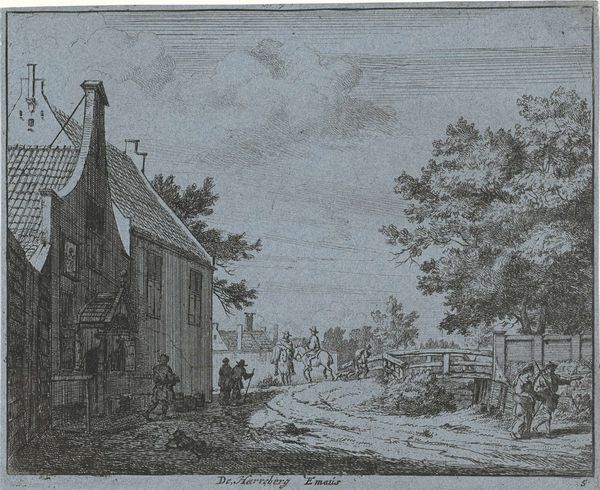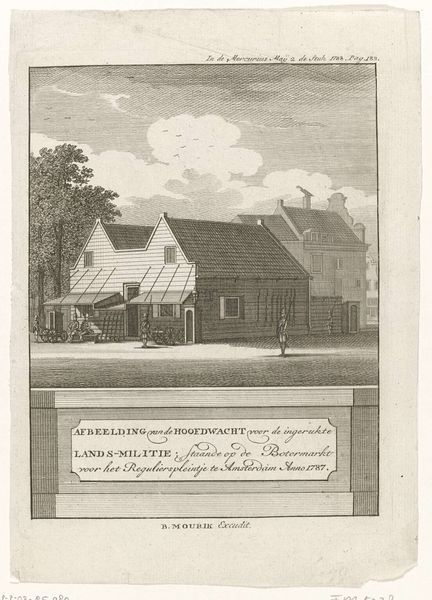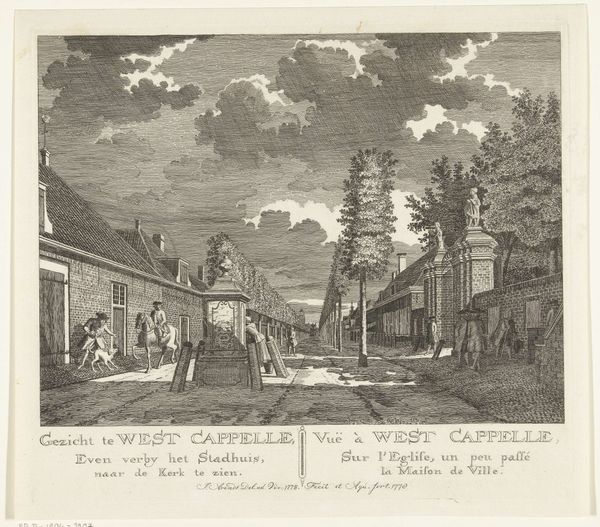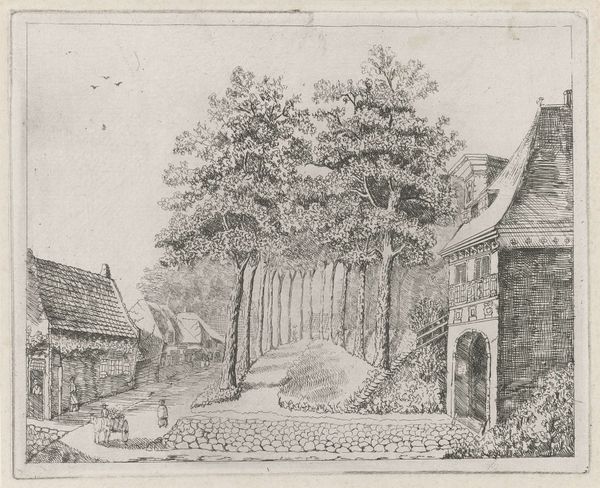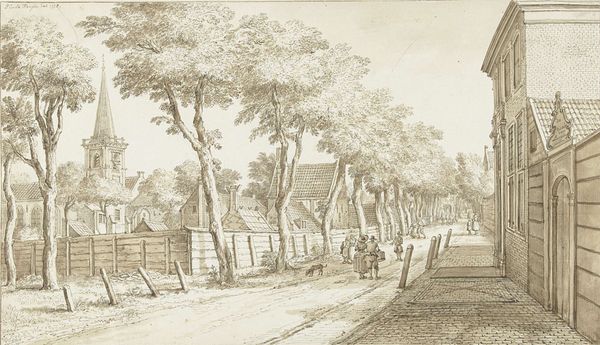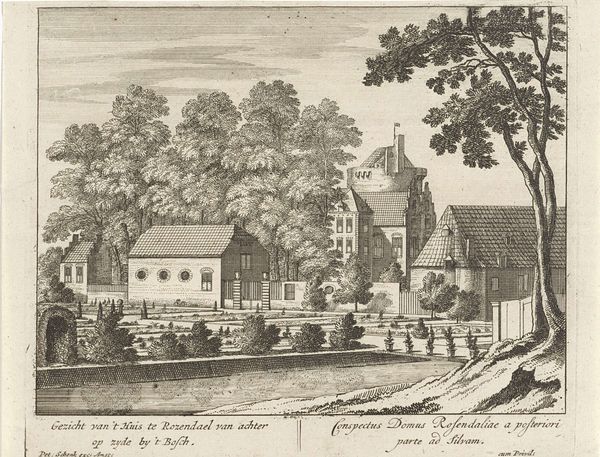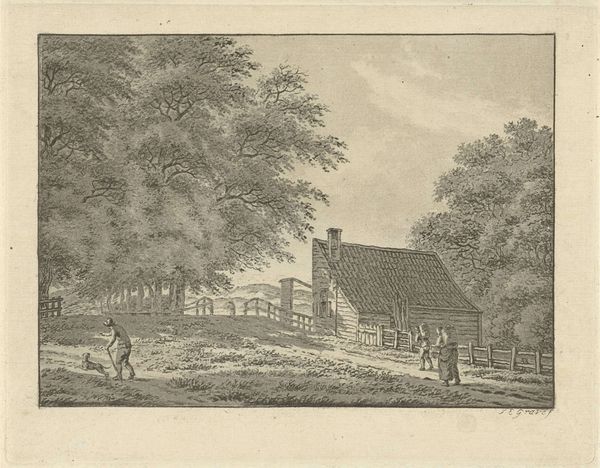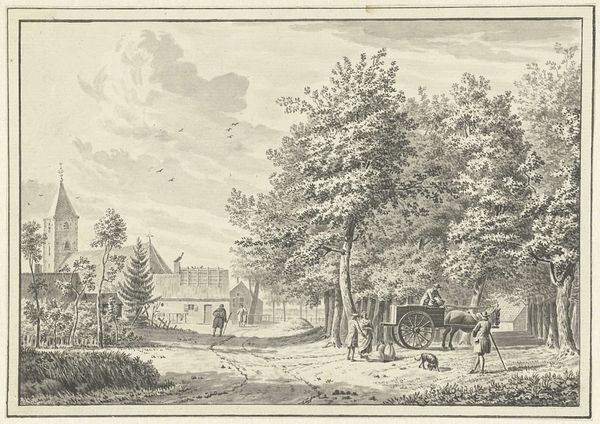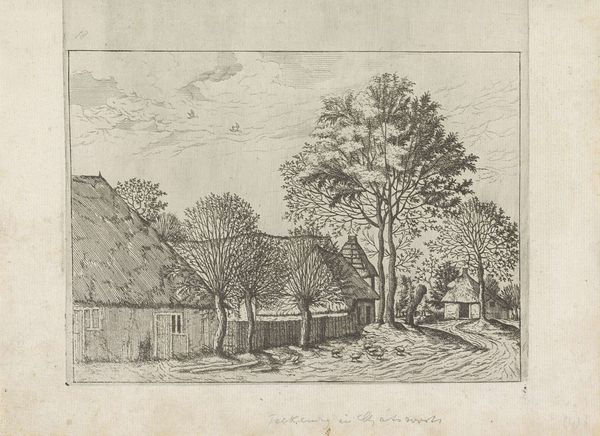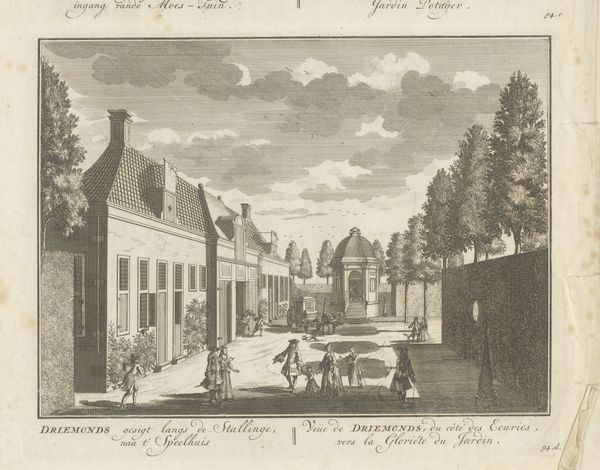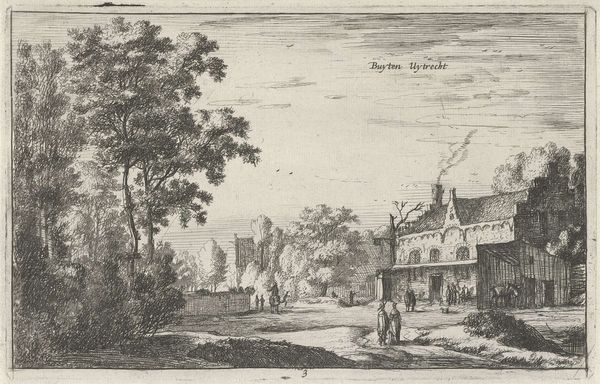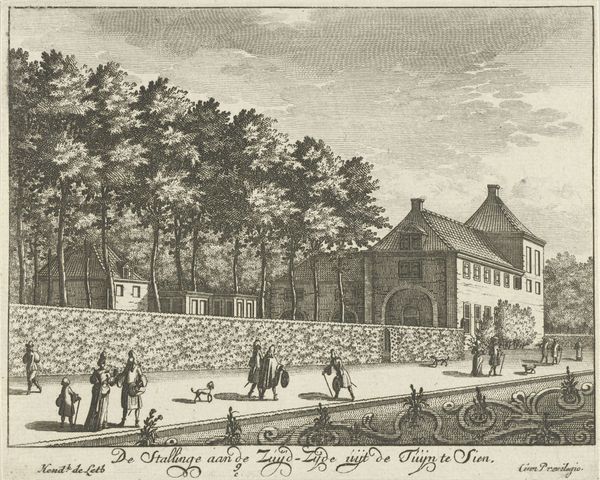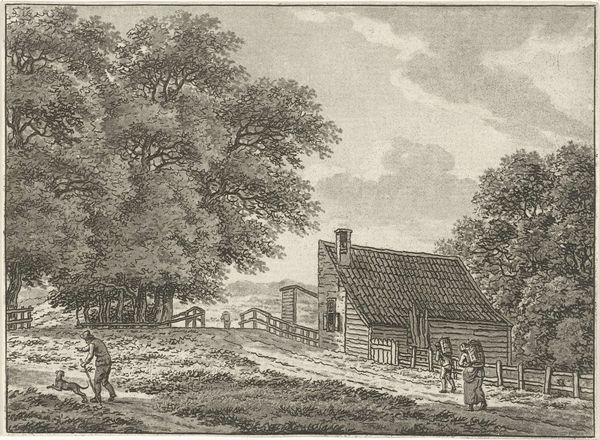
Gezicht op het buitenverblijf Lommerlust te Beverwijk 1752 - 1789
0:00
0:00
Dimensions: height 168 mm, width 210 mm
Copyright: Rijks Museum: Open Domain
Editor: This etching from sometime between 1752 and 1789 by Caspar Jacobsz Philips, titled "View of the Lommerlust Estate in Beverwijk", presents a stately home and gardens. I'm immediately struck by how orderly and almost austere the landscape is. What do you see when you look at this print? Curator: Well, consider the material conditions of its production. This isn't just an image of an estate, but a product *of* that estate, a form of elite self-representation circulated through the very tangible process of etching and printing. Think about the labour involved—from Philips creating the initial drawing to the engraver meticulously working the plate. Editor: So, you’re saying the act of creating and distributing this image was itself a form of… consumption? Curator: Exactly! It visualizes a kind of ideal for the upwardly mobile merchant class, showcasing control not just over nature, evidenced by that geometric garden, but also control over the means of representation. It transforms ownership of property to symbolic capital via prints which require tools and labor to make! How does that impact your view of its "austere" qualities? Editor: That's a fascinating point. I hadn’t considered the etching itself as part of the estate’s… production line. So the image isn't just documenting a scene; it's a statement about wealth and power circulated through the very act of making it. That changes how I view it considerably. Thank you! Curator: Indeed, tracing the material origins reveals volumes about art's function and social life in this period. There's more to an artwork than what meets the eye!
Comments
No comments
Be the first to comment and join the conversation on the ultimate creative platform.

